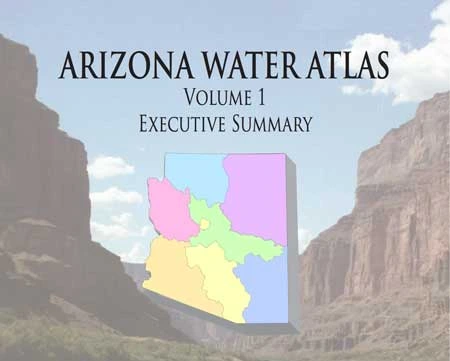
I have been thinking quite a bit about water planning. Water managers and leaders throughout the state have been discussing the many challenges associated with meeting the water demands of our state’s growing population. We’ve experienced several years of drought conditions, and climate change models predict the Southwest will become drier and hotter. Even in the best of circumstances, we know there is a need to identify additional water supplies to meet expected growth in water demand.
Many water providers acknowledge this need. The 2004 Operational Plan of the Central Arizona Groundwater Replenishment District recognizes the need. The Central Arizona Water Conservation District has initiated its ADD Water Process, which focuses on how new water supplies would be shared — and paid for — by those within the Central Arizona Project service area. The actual sources of additional water are yet to be determined. The Upper San Pedro Partnership has been working on identifying options for additional water supplies. Yavapai County is a hotbed of activity regarding growth and water supplies. Also to be considered in any water supply inventory are the remaining unsettled Indian Nation water rights claims.
But, on a statewide basis, do we have readily available and reliable estimates of how much water is needed where and in what time frame? Do we understand how restrictions on water supplies in one area of Arizona may affect water demand in another? How effective will demand side management be in reducing the need for expensive infrastructure, including treatment facilities? What cushion will Arizona Water Banking Authority storage provide? I learned at a recent national conference that most western states have a state water plan. Should Arizona have one, too? What are the consequences of continuing to look at these matters in a fragmented rather than comprehensive way? A statewide examination would enable us to develop a complete picture of needs, including infrastructure, and priorities and strategies for meeting those needs, as well as to identify supportive legislative actions. Options for paying for infrastructure and water supplies would necessarily be included.
Some might think that sufficient water planning is done in the Active Management Areas, home to more than 80 percent of Arizona’s population. The director of the Arizona Department of Water Resources approves Management Plans for the AMAs, but they are not truly water plans. Rather, they are conservation regulations, as mandated by the 1980 Groundwater Management Act, as amended. Historically, they have included an assessment of an AMA’s progress in meeting its statutory management goals, along with projections and other useful information, but they have not included plans for achieving these goals.
We are on the cusp of preparing the Fourth Management Plans for the AMAs. The ADWR is preparing assessments for each of the AMAs, but these assessments have not yet been released. Given the two-year lag between official promulgation of the Management Plan regulations and their effective dates, it is clear that the Fourth Management Plans will not be effective before some time in 2011 at the earliest. What should be done if it appears unlikely that one or more of the safe-yield AMAs would not meet this statutory management goal by 2025?
Beyond the AMAs, future growth is expected to be robust, the current downturn notwithstanding. The Statewide Water Advisory Group has been considering the water needs of different parts of the state. While SWAG recommendations have resulted in state legislation regarding adequate water supplies outside the AMAs, the SWAG’s charge is not to do water planning.
ADWR has been very busy compiling the Arizona Water Atlas, which is a far-ranging source of information by planning areas of the state; information included in the Atlas is available on line at www.azwater.gov. The web site states that currently available water-related information for the State of Arizona has been “collected and synthesized” in order to provide a comprehensive overview of regional water supply and demand conditions, identify water resource issues facing Arizona communities, identify missing information and how information access could be improved, and initiate a renewed and more systematic effort by the department to assist Arizona water planning projects and develop solutions. The Atlas, however, is not a state water plan. If we don’t take advantage of this up-to-date assembly of data, will we be missing an opportunity to understand better the implications of where we are heading?
Do we have the capacity to develop a state water plan, given the shortage of financial resources and the great demands on staff resources at ADWR? Do we have the political will to consider the many difficult questions associated with future water supplies and how to pay for them? Or conversely, can we afford not to develop a state water plan? Do the complexities necessitate taking a big-picture look? If the collective will to develop a plan materialized, could we establish a process for developing the plan that is inclusive and transparent? Can we use development of the Fourth Management Plans to launch a statewide effort?
I would greatly appreciate your sharing your thoughts regarding these many questions by writing to me at smegdal@cals.arizona.edu.

